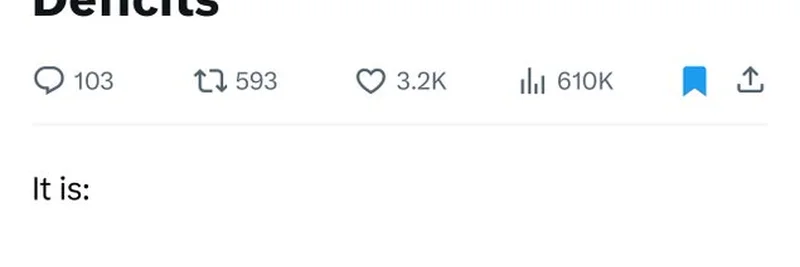Hey there, crypto enthusiasts and blockchain buffs! If you’ve been keeping an eye on the latest buzz on X, you might have stumbled across a thought-provoking post by Kyle (@0xkyle__) that dives deep into the world of government debts and deficits. Posted on July 3, 2025, this tweet has sparked a lot of conversation, and today, we’re breaking it down for you in a way that’s easy to digest—especially if you’re into meme tokens or the broader blockchain scene.
What’s the Big Idea?
The core message from Kyle’s post is pretty straightforward but packs a punch: when countries find themselves drowning in debt, policymakers often turn to a two-pronged approach. They lower interest rates and devalue the currency in which the debt is denominated. Why? Because it’s the path of least resistance—and the one they’re most likely to take. As Kyle puts it, “so it pays to bet on it happening.”
Let’s break this down a bit. Lowering interest rates makes borrowing cheaper, which can stimulate the economy and help manage debt payments. Devaluing the currency, on the other hand, reduces the real value of the debt in global terms—think of it like a reset button for a country’s financial obligations. It’s a strategy that’s been seen in history, from the Weimar Republic to modern-day examples like Venezuela.
Why Should Blockchain Fans Care?
You might be wondering, “What does this have to do with meme tokens or blockchain?” Well, a lot, actually! Government debt and currency devaluation can shake up the financial world, and that includes the crypto market. When currencies lose value, people often look for alternatives like Bitcoin, Ethereum, or even meme coins like Dogecoin to hedge against inflation. This tweet’s insight suggests that betting on devaluation could be a smart move—and for blockchain practitioners, it’s a signal to watch how these macroeconomic shifts might boost demand for decentralized assets.
The Historical Context
Kyle’s post didn’t stand alone—it sparked a thread where users chimed in with historical examples like the Weimar Republic (1923), Greece (1943), and Zimbabwe (2007). These cases show how extreme debt situations have led to drastic measures, often with messy outcomes. It’s a reminder that while devaluation might be a preferred path, it’s not always smooth sailing. For those of us at Meme Insider, this ties into understanding how economic instability can drive interest in alternative financial systems—hello, blockchain!
What’s the Takeaway?
So, what should you do with this info? Kyle’s advice to “bet on it happening” isn’t just a casual remark—it’s a call to stay informed and maybe even adjust your investment strategy. If governments keep leaning on interest rate cuts and currency devaluation, it could mean more volatility in traditional markets and a potential surge in crypto adoption. For meme token enthusiasts, keeping an eye on these trends could help you spot the next big thing.
We’d love to hear your thoughts! Drop a comment below or join the conversation on X about how government debt might influence the meme token space. And if you’re hungry for more blockchain insights, check out our knowledge base for the latest updates. Stay curious, and let’s navigate this wild financial world together!


